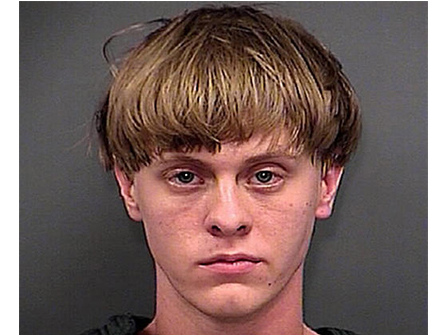
CHARLESTON, S.C. (AP) — A survivor of last year’s massacre at a black South Carolina church testified Wednesday that her Bible study group had just closed their eyes and started praying when a loud sound shattered the stillness. The basement room went dark.
When Felicia Sanders opened her eyes, she saw a young white man the parishioners had welcomed to the study only a half-hour earlier. Dylann Roof was mowing down the pastor and eight others with gunfire and hurling racial insults.
Sanders, the first witness in Roof’s death penalty trial, fought back tears as she recalled sheltering her granddaughter under a table and telling her to play dead. She watched in horror as her son Tywanza and her 87-year-old aunt, Susie Jackson, were killed in the fusillade.
At one point, she looked across the courtroom toward Roof and called him “evil, evil, evil.”
The gunman had planned the attack for months and traveled about 100 miles to Charleston on June 17, 2015, to attack Emmanuel African Methodist Episcopal Church, the oldest black church in the South, because of what it represented, prosecutors said. He told the parishioners he was killing them because blacks were raping white women and taking over the country. In a manifesto found later, he said he hoped to start a race war.
The attorney for the 22-year-old all but conceded during opening statements that Roof committed the slayings but suggested that he should be spared the death penalty.
One of three survivors, Sanders said Roof came by the Wednesday night gathering and was given a study sheet and a Bible by the Rev. Clementa Pinckney, the church’s pastor and a state senator.
When she heard the loud noise, she assumed something was wrong with the electricity. Then she saw the real reason.
“I screamed he had a gun,” she said. But by that time, Pinckney had already been shot. Soon her son was hit.
“I watched my son come into this world and I watched my son leave this world,” she said before becoming so distraught that U.S. District Judge Richard Gergel called a recess. Several people sitting among the survivors’ family members and several jurors dabbed away tears.
Roof, wearing a striped prison jumpsuit, just stared down at the defense table, as he did throughout the day.
“He just sits there the whole time. Evil, evil, evil as can be,” Sanders testified.
In the prosecution’s opening statement, Assistant U.S. Attorney Jay Richardson said Roof had a “cold and hateful heart.”
“He pulled the trigger on that Glock .45 more than 70 times that night. More than 60 times he hit parishioners,” the prosecutor said.
Before the slayings, Roof had posed in photos with the Confederate flag. The attack prompted South Carolina to completely remove the emblem from its Capitol grounds. Other state and local governments voted to take down Confederate monuments, remove the flag from parks or rename government buildings honoring Confederate soldiers.
If Roof is convicted, the case will move to the penalty phase, where he plans to act as his own lawyer to apparently fight for his life.
A panel of 12 white jurors, five black jurors and one person of another race were selected, according to court officials who said the alternates will not be picked until the end of the trial.
Defense attorney David Bruck said the facts of the case are largely undisputed and that he would likely ask few questions of the government witnesses. He may not call any witnesses of his own.
The defense has said repeatedly in both federal and state court that Roof is willing to plead guilty if capital punishment is taken off the table. Prosecutors have refused. Roof faces another death penalty trial next year in state court.
Bruck urged jurors to pay attention to the little things and use their common sense to determine what made Roof hate black people so much. He tried to hint at reasons why Roof should not be put to death, but prosecutors objected, saying that was for the penalty phase. The judge agreed.
Roof’s trial began only days after another one with racial overtones ended in a mistrial. Jurors could not agree on a verdict for former North Charleston police officer Michael Slager, who shot a black man in the back as he was running away from a traffic stop. A bystander recorded the shooting, and it was seen widely on TV and online.
The church slayings took place a little more than two months after the Slager shooting, and Charleston has stayed mostly calm, unlike other cities where police shootings and perceived racial injustice has rocked communities.
State prosecutors plan to retry Slager.
















